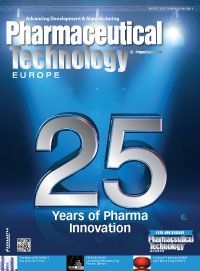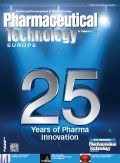Biosimilar Development: 10 Years On
Pharmaceutical Technology Europe
With a number of branded biologics hanging at the patent cliff, the future looks promising for biosimilars.

Biosimilars—A New Era Unfolds
With a number of branded biologics hanging at the patent cliff, the future looks promising for biosimilars.
The first generation of biological products has already reached patent expiry, leading to the advent of biosimilars. A key driving force for this emerging sector is the universal need for more affordable medicines, with the potential market forecast to be substantial. The European Union established the first legal regulatory guidelines for biosimilars in 2005. These guidelines involve the demonstration of similarity by performing side-by-side comparison against the originator product. The first biosimilar, Omnitrope, a version of somatropin, was approved in April 2006. To date, the EU has approved 19 applications in total (two were withdrawn after authorisation so 17 are now marketed) and continues to update its guidelines, general and product-specific, in the light of its experience. Other countries have also established regulatory pathways requiring a comparative approach. The World Health Organisation (WHO) adopted a Guideline on Evaluation of Similar Biotherapeutic Products in October 2009.

Pharmaceutical Technology Europe25th Anniversary Issue
In the United States, the Biologics Price Competition and Innovation Act of 2010 provides a new pathway for biosimilars--the 351(k) route of the Public Health Service Act. One aspect of the legislation unique to the US is the provision for two levels: biosimilar and interchangeable biosimilar. FDA has published draft guidance documents to assist biosimilar developers (Feb. 2012, Apr. 2013 and May 2014), but to date, no biosimilar products have been approved following the 351(k) route.
Initially, the biosimilars approved were simple proteins such as somatropin, epoetin and filgrastim. Even so, it took several years for these products to be embraced by the clinical community and make an impact on the market. Monoclonal antibody (mAb) products move the challenge of establishing biosimilarity to another level. The “best sellers” such as Avastin, Herceptin, Humira, Remicade and Rituxin, which account for more than half of all global revenues, and are nearing patent expiry, now present attractive targets for drug developers. The approval of the first mAb biosimilar, infliximab, in Europe last year (Celltrion’s Remsima and Hospira’s Inflectra) paves the way for more widespread access to biological treatments with complex biomolecules. Indeed, several more biosimilar mAbs are currently in late-stage clinical trials and can be expected to be submitted to regulatory authorities shortly. In June, a positive opinion was also given by EMA to a biosimilar of insulin glargine.
Biosimilar drugs are now available in many highly regulated markets, and in some countries, market share is already overtaking that of the originator products. Although there are still many questions to be answered, such as extrapolation of indications, interchangeability and naming, the legal and regulatory basis for the authorisation of biosimilars is built on strong scientific and quality foundations coupled with appropriate safety and clinical studies.

About the Author
Fiona Greer, PhD, is global director, Biopharma Services Development, at SGS.

Drug Solutions Podcast: Applying Appropriate Analytics to Drug Development
March 26th 2024In this episode of the Drug Solutions Podcast, Jan Bekker, Vice President of Business Development, Commercial and Technical Operations at BioCina, discusses the latest analytical tools and their applications in the drug development market.